Designing Impact: The Art of HTML Emails
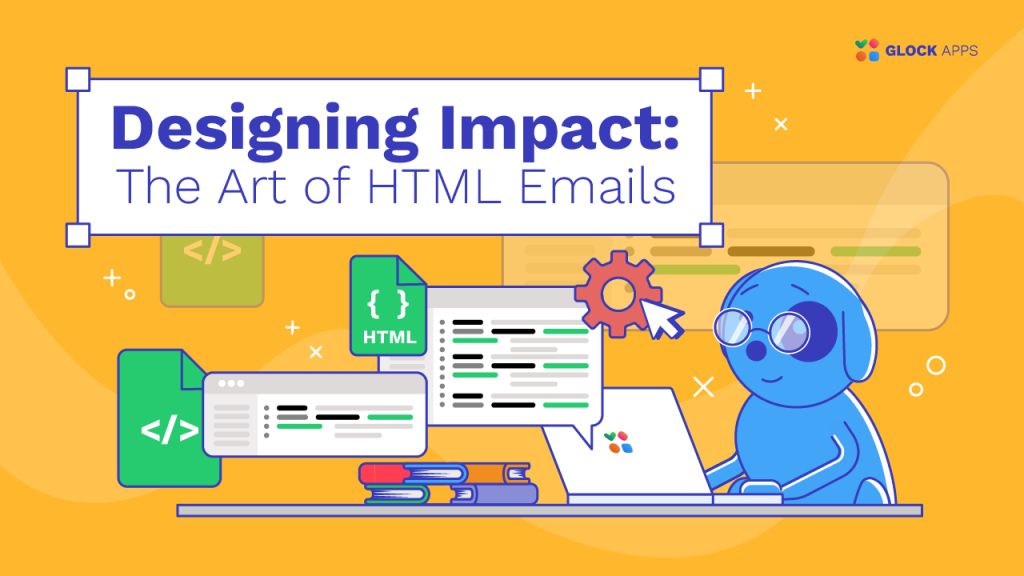
Estimated reading time: 8 minutes
As the digital era brings new communication strategies to the fore, HTML email design in particular has come to play a monumental role in digital marketing. HTML email design ensures that all emails are well-structured, neat, and most importantly, functional in every way. This is because the use of HTML in email design offers more than just aesthetics. It increases functionality by allowing the users to design more interactive emails using forms and surveys which creates impactful and engaging email campaigns that capture and maintain the audience’s attention.
Understanding HTML Email Design
HTML email design is an advanced form of art and science, dedicated to the creation of emails using HTML and CSS to improve both email formatting and visual appeal. While the old style of plain text emails limits your emails to a block of text, HTML emails give you deeper visual capabilities such as a wider color palette, various graphics, and dynamic layouts. HTML allows you to create exciting experiences for your readers on a delivery medium other than a website, making it so effective. HTML email design doesn’t just inform. It excites and stimulates the viewer by turning a regular delivery medium into an interactive experience. Take a look at how Formula 1 turns their emails into an interesting experience for the recipient:
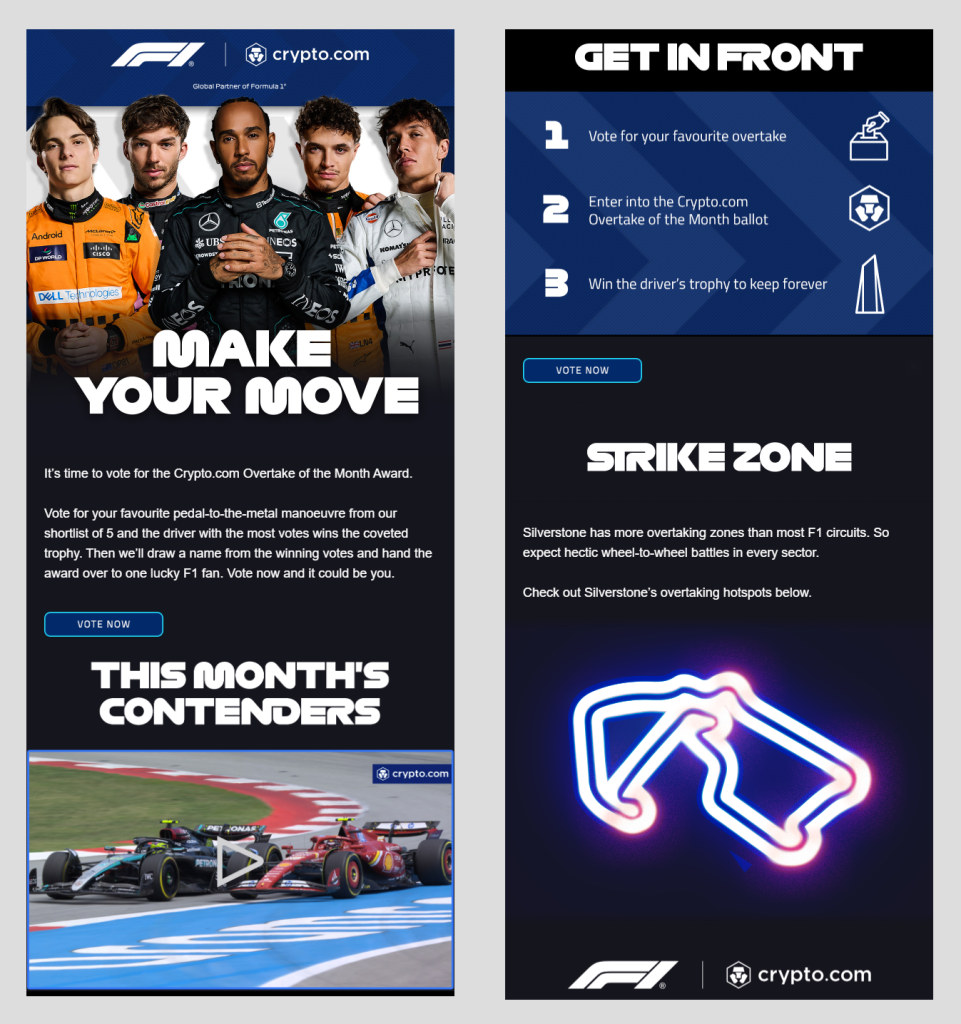
Why Choose HTML Email Design?
Choosing to design HTML emails allows you to use more elements to add creativity to your email, and it really gives your emails a chance to come alive. HTML lets you replicate the look of your website further strengthening your brand’s identity with logos, colors, and typography along with the use of buttons, links, and menus to help user engagement and click-through rates.
Essential Components of HTML Email Design
The HTML email elements play a vital part in enhancing the visual aspect and overall functionality of an email, making it more effective. These elements benefit both the email sender and the receiver:
Responsive Design: Ensuring your email displays correctly across all devices, including desktops, tablets, and smartphones, is paramount. Responsive design adapts the layout to the viewing environment using fluid grids, flexible images, and media queries.
Clean and Organized Code: Writing clean, clear, and concise HTML and CSS code ensures emails load quickly and display correctly across all email clients.
Branding: Consistent use of your brand’s colors, fonts, and logo strengthens brand recognition and trust. Your emails should be an extension of your brand’s digital presence. Valentino and Ralph Lauren are perfect examples of cohesive email design that alines with their brand:
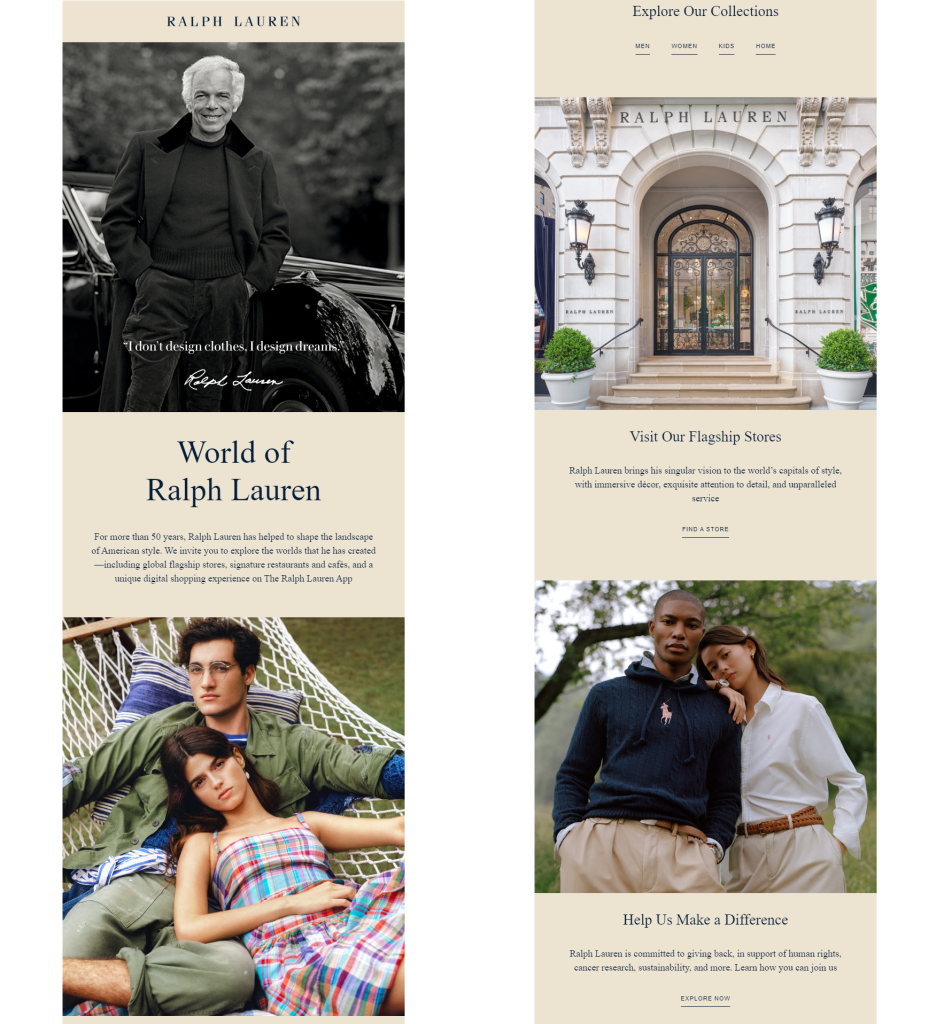
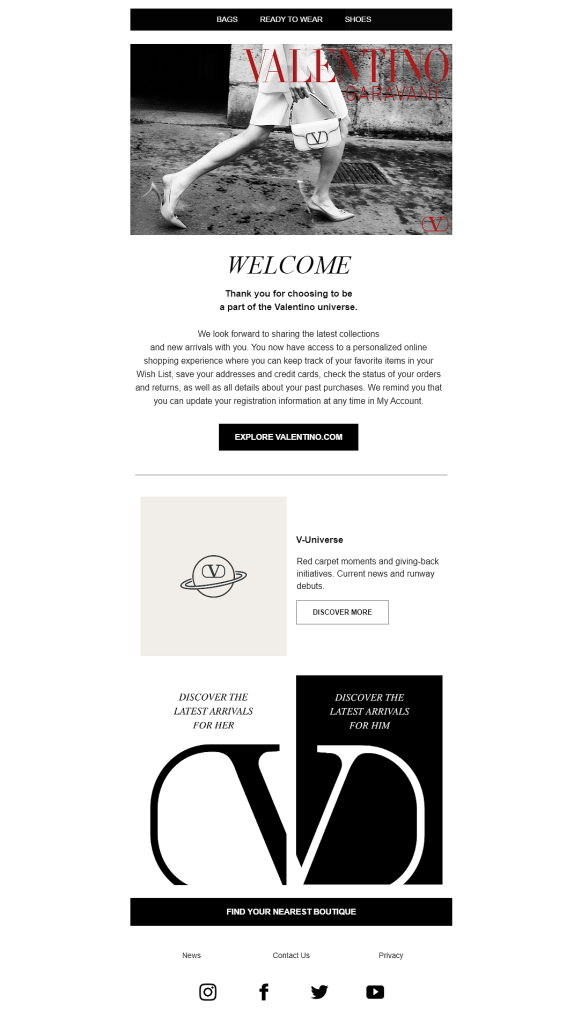
Images and Graphics: Visually appealing images and graphics can make your email more engaging. However, it’s important to use them sparingly to avoid clutter and ensure they are optimized for quick loading. Figma’s emails are truly captivating:
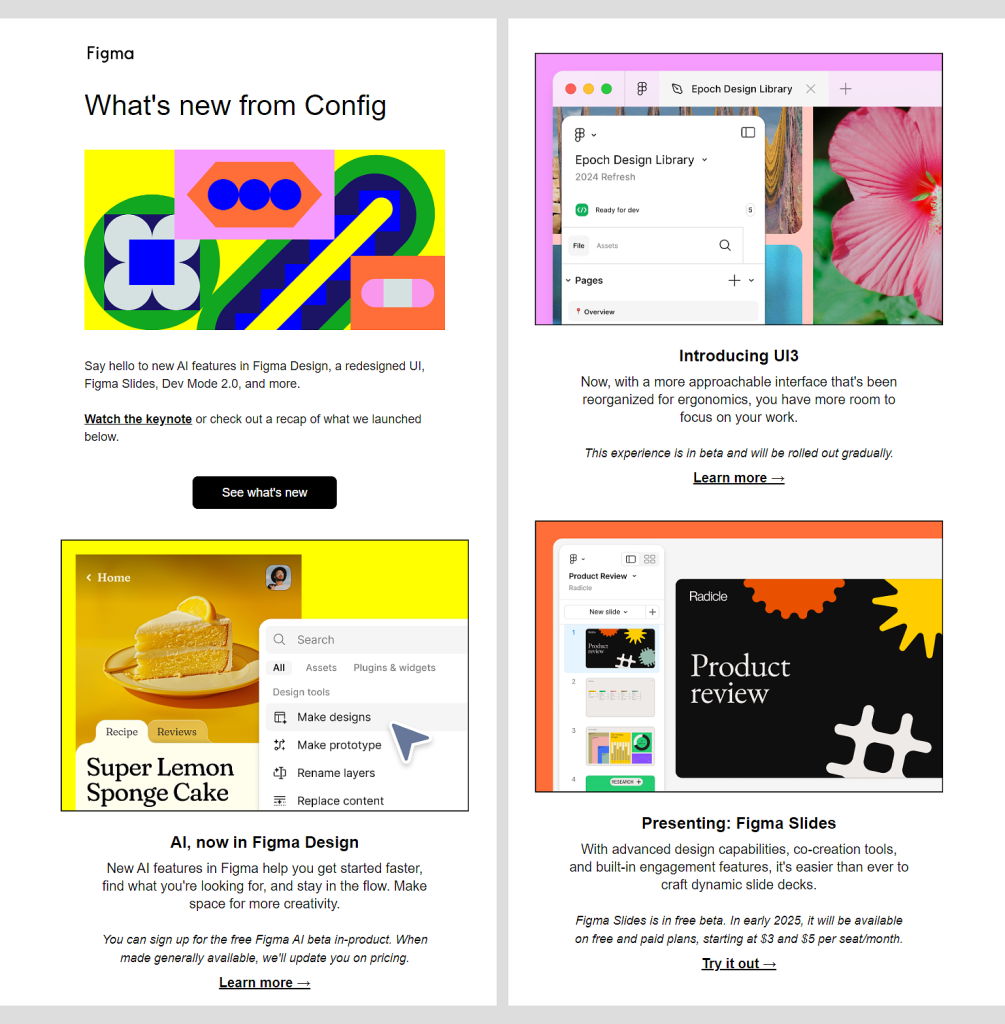
Call to Action (CTA): A strong, clear call to action is vital. It guides users on what to do next, whether it’s visiting a website, signing up for a service, or making a purchase. CTAs should be noticeable and concise. Look at these two incredible examples of great CTA implementation:
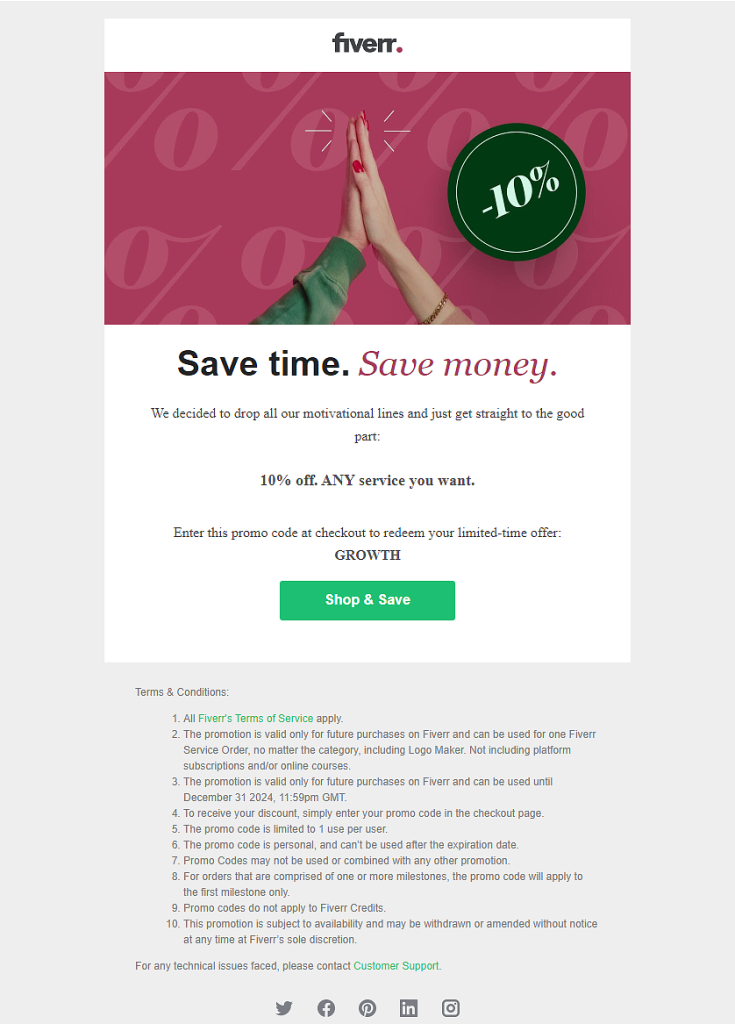
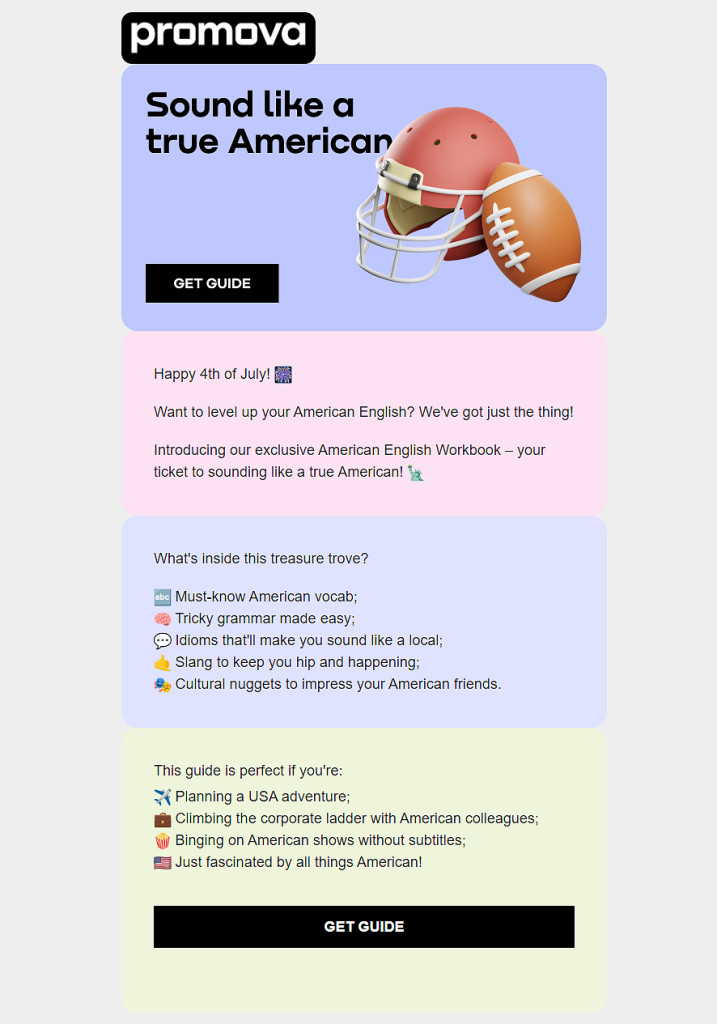
Personalization: Using personalization techniques, such as including the recipient’s name or content tailored to their interests, can increase engagement and open rates. Van Cleef & Arpels made their email feel way more special just by addressing the recipient by name:
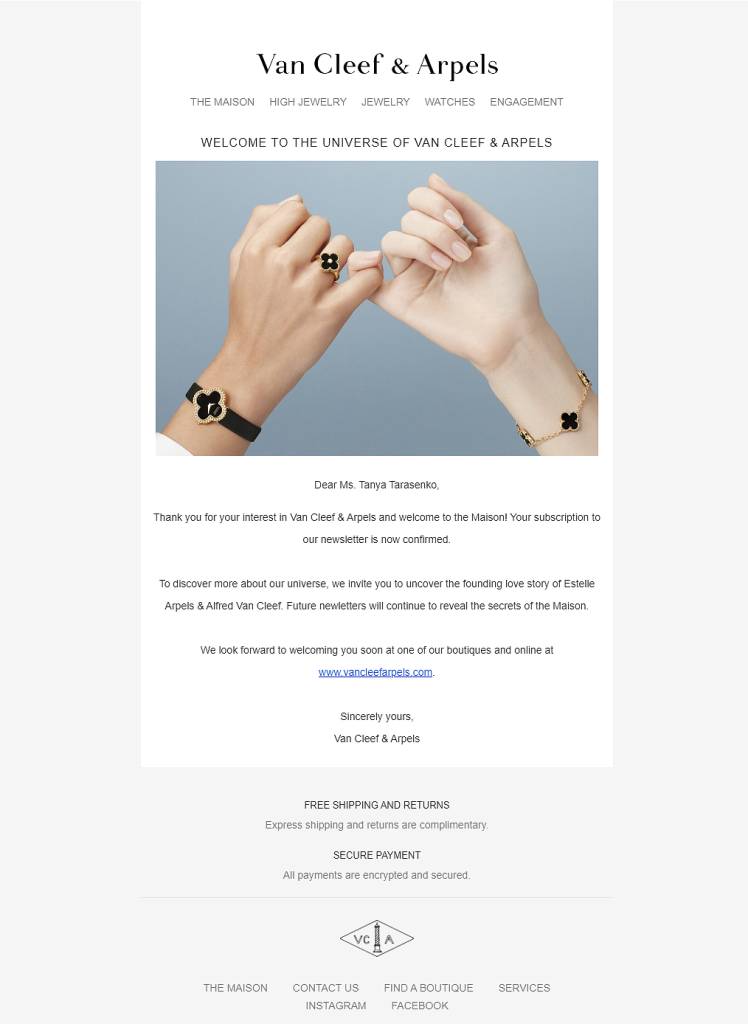
Interactive Elements: Incorporating interactive elements like hover effects, animated GIFs, or collapsible menus can make emails more interactive and enjoyable for recipients.
Testing Across Email Clients: Different email clients can display HTML content differently, so it’s essential to test your email’s appearance in multiple clients to ensure consistency. Let GlockApps take care of your emails!
Balancing Design with Functionality
The key to successful HTML email design lies in balancing aesthetic appeal with functional elements that improve deliverability. This involves:
Use a professional and appealing visual design that reflects your brand identity.
Ensuring the HTML and CSS code is clean and compliant with current web standards.
Testing emails across different platforms and devices to ensure they look and function as intended.
Keeping abreast of email client updates and changes in spam filter algorithms to tweak designs as necessary.
Security Concerns with HTML Emails: Mitigating Risks in Email Design
Rich media and interactive features make HTML emails a prominent tool in digital marketing, but they also provide an opportunity for different kinds of cyber-attacks, notably phishing attacks. Understanding the underlying vulnerabilities and addressing security risks in the design and development of HTML emails is therefore important for ensuring that the data of the sender and receiver are secure and safe.
Strategies to enhance security in HTML email design:
Use Plain Text Alternatives: Besides assisting in accessibility, presenting a plain text version of the email can aid in avoiding phishing attempts, by rendering the links and text in their native format, instead of formatted for legibility. It is recommended to use the multicomponent MIME format, which combines HTML and plain text, for better deliverability.
Secure Email Sending Practices: Use measures to authenticate emails such as SPF (Sender Policy Framework), DKIM (DomainKeys Identified Mail), and DMARC (Domain-based Message Authentication, Reporting, and Conformance) to prevent email spoofing, and to confirm that the email is from the claimed source.
Use Secure Email Design Templates: Develop and use email templates that are secure by default and without external dependencies that could be compromised. Update templates frequently to incorporate the most recent best practices.
Conclusion
HTML email design is a potent mixture of art and science, a mechanism for crafting messages that are both beautiful and designed to interact effectively with receivers and perform flawlessly on the widest possible set of devices and email clients. With the help of responsive design, streamlined coding conventions, and thoughtful personalization, organizations can create messages that are effective and accessible to many readers. Security is another crucial dimension of HTML email design. As the nature of cyber threats changes, so must our approaches to resilience, encrypted communication, and safeguarding sensitive data. The use of multifaceted programs for authentication and secure design templates is important to ensure the legitimacy and trustworthiness of your email.
To conclude, HTML email design is a key weapon in today’s digital marketing arsenals. Blending excellent design with functionality and security enables businesses to make emails much more than just a channel of communication. Emails can become a powerful tool not only to convey information, but as a channel for branding, engagement, and retention. Don’t miss the inbox – use GlockApps to ensure effective email deliverability!
FAQ
HTML email design involves creating emails using HTML and CSS to improve formatting and visual appeal. This approach allows for more dynamic and interactive emails compared to plain text emails.
You can use HTML email design to bring your visuals to the next level, with interactive elements like buttons and links – recreating your website’s look, boosting your brand recognition with logos, colors and typography.
Ensure security by using plain text alternatives for better deliverability and security. Authenticate emails with SPF, DKIM, and DMARC. Develop secure email templates and update them frequently.



